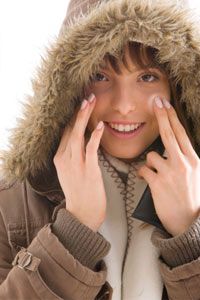Maybe you live in an area where the summers are hot and humid, or maybe you live in place where the winters are cold and bitter. Either way, the climate can impact the health of your skin.
Your skin type -- whether it's normal, dry or oily -- often determines how you approach your skin care. However, the climate you live in -- whether it's dry, humid, hot, cold or windy also affects your skin -- especially how you moisturize it. Moisturizing is an important part of caring for your skin, and you should tailor your choice of moisturizer to your climate. Moisturizing products help your skin retain water, and they often contain ingredients called humectants and emollients. Humectants -- such as urea, glycerin and alpha hydroxy acids -- work by absorbing water from the air around you. Emollients -- such as lanolin, mineral oil and petrolatum -- lubricate skin and improve its appearance [source: Mayo Clinic].
Advertisement
Keeping your skin moisturized will help it maintain a young, smooth appearance -- no matter where you live. Read on to learn how to keep skin moisturized in a dry climate.

